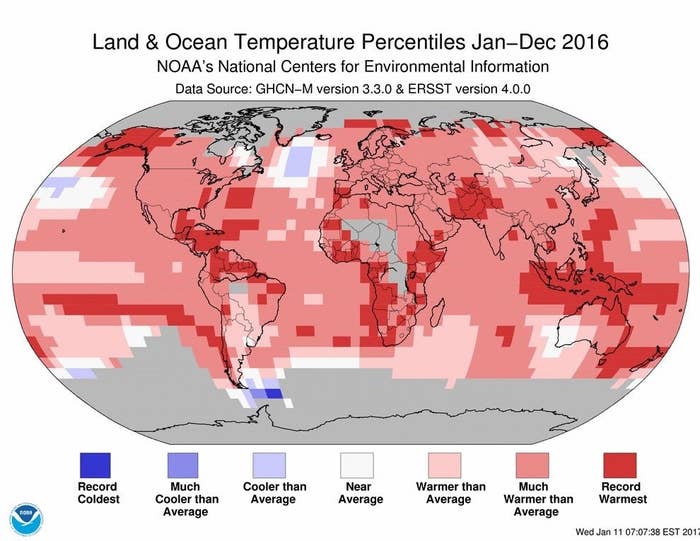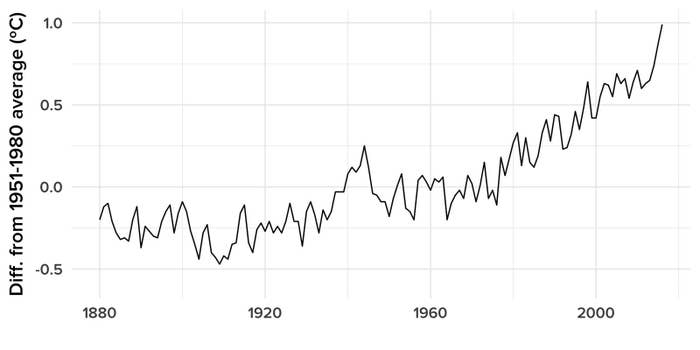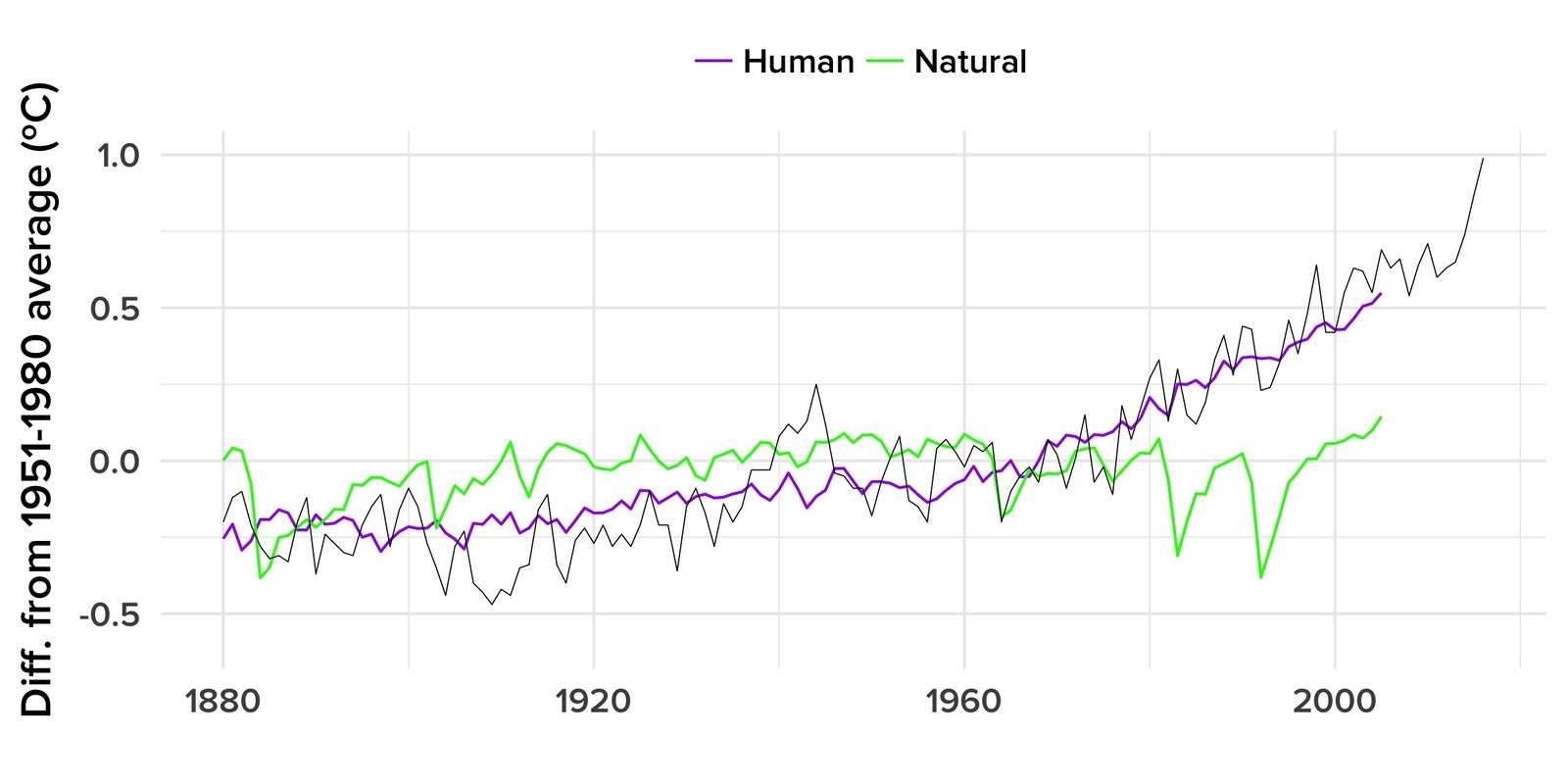
Like the two years before it, 2016 has now been confirmed as the warmest year in the historical record. Today, NASA, the National Oceanic and Atmospheric Administration, and the UK Met Office announced that their separate records of surface temperatures across the globe confirm that last year’s heat was unprecedented.
Here is NASA’s record of the annual average global temperature since 1880.

As BuzzFeed News noted late last year, opponents of the scientific consensus of global warming are now concentrating on cooling that has happened in the last few months, after the end of a strong El Niño — the warm phase of a Pacific Ocean cycle that releases heat into the atmosphere.
But climate-change deniers have another story: Some acknowledge that global warming is happening, but argue that it’s mainly due to natural causes — not the carbon dioxide and other greenhouse gases released by human activities, primarily the burning of coal, oil, and natural gas.
In his Senate confirmation hearing last week, Donald Trump’s nominee for secretary of state, Exxon Mobil CEO Rex Tillerson, also cast doubt on our ability to predict the effect of greenhouse gases.

In fact, scientists have been working to attribute the warming we’re seeing to the various factors that could be involved. Using the same computer models they use to predict how the climate may change in future, they’ve wound the clock back to the late 1880s, and then simulated the changes in temperature that would result, given our understanding of how each factor affects global temperatures.
Natural factors, from fluctuations in the Earth’s orbit, through variation in the radiation coming from the sun, to the cooling effects of the ash released in volcanic eruptions, can affect the climate.
Here’s how NASA’s simulations of various natural influences on global temperature shape up against the observed warming.
Greenhouse gases aren’t the only human influences on global temperature. Aerosols of tiny pollutant particles overall have a cooling effect. Emissions of ozone and changes in land use — including deforestation — also influence our planet’s temperature.
But as Bloomberg News showed in a 2015 graphic based on NASA data, greenhouse gases provide by far the best explanation of the observed warming. And that adds to our confidence in predicting that greenhouse gases will continue to heat the planet in the future.
Here’s the latest temperature data compared with NASA’s simulations of human influences on climate.
Put all of these natural and human influences on climate together, and this is the overall picture.

And isn’t just that scientists’ computer models of human influences on climate closely match the warming that has actually occurred. The details of the observed changes fit with the idea that greenhouse gases are to blame.
For example, while the lower atmosphere is warming fast, higher up the stratosphere is actually getting cooler. That’s exactly what you’d expect to see if a blanket of greenhouse gases was preventing heat from radiating out into space. But if changes in solar radiation were the main cause, the stratosphere should be warming, too.
“It’s very, very hard to understand, if it wasn’t the culprit, why somebody left carbon dioxide’s fingerprints all over the crime scene,” Gavin Schmidt, director of NASA’s Goddard Institute for Space Studies in New York City, told BuzzFeed News.
